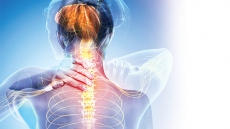What to Wear While Working Out?
You might not realize it, but the clothing you wear while exercising can have a major impact on how you feel before, during and after your workout session. With this in mind, let’s take a look at a few things you should consider when choosing what to wear while working out.
Dressed for Success
Exercising is a largely mental endeavour, and preparation beforehand can improve your likelihood of optimal exertion in the moment. Just like you would put a certain degree of attention into how you dress before a date or job interview, that same preparedness can influence how you perform during exercise – especially if you’re exercising in a gym or public space. By wearing a set of clean, will-fitted workout clothes, you can walk into your session with greater confidence.

Hot Weather?
If you’re working out in the hot summer months, the wicking fabrics can become essential. Overheating will not only reduce how much effort you can put into your workout, but it can actually be dangerous. If you’ll be exercising in the direct sun, it’s also a good idea to consider long sleeves or pants to avoid sunburn.
Get Fit
Choose workout clothes that fit you well. This means that they’re not so loose that they can get caught up in a machine or while running, and they’re not so tight that they limit mobility or even cut off circulation. These days fitness apparel companies make options that are cut for a wide range of body types, so look around and find something that offers the right fit for you.

Choose your Fabrics Wisely
A lot of people who are new to fitness simply throw on an old-cotton t-shirt and call it good, but this is a mistake. Cotton absorbs sweat, which is not only uncomfortable as it clings to your skin, but it prevents evaporation and makes it harder for your body to cool. Go with breathable synthetic fabrics that are made to “wick” sweat from the skin. And always avoid rubber or plastic-based materials that don’t breathe and can cause you to overheat.

Cold/Wet Weather?
Dressing for a workout in in-climate weather can be tricky due to the fact that your body temperature will rise as you exercise. Wear an inner-layer of wicking fabric against your skin, then removable layers for insulation above that. If you’ll be outdoors in the rain or wind, wear weather-proof layer on top. And remember to protect extremities like the nose, ears, and hands accordingly.
Socks and Underwear
A lot of people make the mistake of simply wearing their everyday undergarments, but you should look for socks and underwear that not only provide proper support, but that are made from wicking fabrics for coolness. Antimicrobial fabrics are also a good option, as they help to prevent strong odors from building up. And stay away from all-cotton socks, as these can become soggy, cause friction, and then create blisters.

Accessories
There are a wide range of workout accessories out there that provide varying degrees of utility. Perhaps the most common are weightlifting gloves, belts, and hooks. While these can be useful for people who are lifting heavy, the fact is that most people are only wearing them to look cool. If you genuinely need them to help with big lifts, go for it. Otherwise you can save yourself some money and go without.
Test Beforehand
Your leggings or yoga pants might look great at home or when you’re just walking around, but sometimes when you’re doing squats or other movements they can stretch to the point of becoming…revealing, to say the least. The same goes for low-cut or tight tops, which have a tendency to pop at all the wrong moments. Put your new outfit through more than just a visual trial. Do a few movements to make sure it provides proper coverage.

Post-Workout
Once your session is over, don’t just leave your workout clothes festering in the bottom of your gym bag. Wash them somewhat promptly to ensure that the scent and stains of sweat don’t set into the fabric. Over time they will build up a persistent stink, so do your nose and everyone else’s a favour by replacing them periodically.






